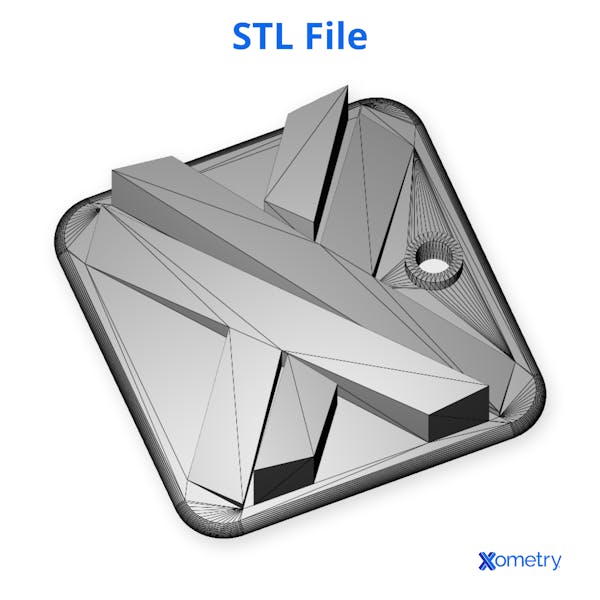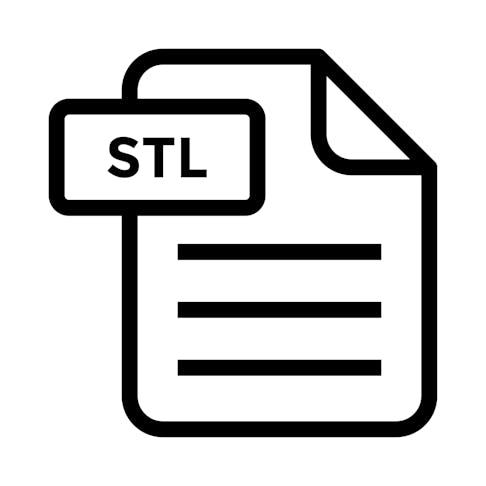STL is a file format that characterizes all the surface geometry of a 3D model without describing its color, texture, or other model properties. Today, STL is the most common file format used in 3D printing. STL file converters can be compared with each other based on their ease of use, breadth of offerings such as bulk file conversions and allowable file inputs, maximum allowed file size, and cost.
Blender can be considered the best overall STL file converter based on usability, number of compatible file formats, and price. If having 3D design and STL file conversion in the same application is critical, Autodesk Fusion® is an excellent choice as well. Finally, SwiftConverter can also be considered in the top tier of STL file converters due to its simplicity and ability to support bulk file conversions. This article will evaluate the 15 best STL file converters and assist you in selecting the best STL one for your project.
1. Blender
Blender is a popular, free open-source software program widely used in 3D design and animation. It supports 15 different file formats, including common ones such as: OBJ, SVG, PLY, and DAE. More file formats can be converted using community add-ons. Blender can be used on Windows, macOS, and Linux, and is also mobile-friendly. Its expansive file conversion capabilities, coupled with its compatibility with multiple different operating systems and its free availability, make Blender an ideal choice as an STL file converter.
2. Autodesk Fusion®
Fusion® is a robust CAD software package developed by Autodesk® that is capable of 3D design, computer-aided manufacturing (CAM), and simulations. Fusion® has the ability to convert 35 different file formats, including such popular CAD formats as PRT, STP, and IGS. Fusion® can be used on Windows OS and macOS. It offers a limited 30-day free trial, after which it costs $1635/year. A major advantage of using this software is the ability to design complex 3D models using traditional CAD techniques, and then easily convert those files to STL in a streamlined fashion. Its downside, however, is its cost. Using it solely as an STL file converter may not be the best choice.
3. SwiftConverter
With SwiftConverter, users can convert six different file formats to STL. The intuitive user interface makes SwiftConverter a popular choice for file conversions. The free-to-use, browser-based software has a maximum allowable file size of 100 MB and can support conversions of file formats such as 3MF, 3DP, 3DS, OBJ, and PLY.
4. Tinkercad
Tinkercad is a free, online browser-based 3D modeling program that can convert just two file formats—SVG and OBJ file formats—to STL. The biggest advantage of using Tinkercad as an STL file converter is that it is offered free of charge. Users can also take advantage of Tinkercad’s cloud-based storage, which allows users to save conversions for later use. Perhaps the biggest disadvantage of using Tinkercad is that it can only be used with an active internet connection. Additionally, its limited file type conversion capability hinders its ability to compete with other file converters.
5. SketchUp Pro
SketchUp Pro is a premium subscription-based software developed by Trimble. With SketchUp Pro, users can convert over 20 file formats to STL including OBJ, 3DS, DXF, and KMX. The software is compatible with both Windows OS and macOS and costs $300/year. An advantage of SketchUp Pro is that it is easy to use. One disadvantage is its annual subscription fee.
6. Aspose
Aspose is an online-only STL file converter that allows users to convert over 20 different file types, including DAE, 3DS, and FBX. Aspose is free-to-use and mobile-friendly—allowing users to easily convert files. A big advantage of Aspose is that it allows users to upload and convert files directly from their computers, from a URL, or from Dropbox or Google Drive folders.
7. Microsoft 3D Builder
While not explicitly designed to be a file converter, Microsoft 3D Builder can be used as an STL file converter for OBJ, PLY, and VRML file formats. It can be used for free, but only on Windows OS. Its limited file compatibility means that this software is seldom used for file conversions compared to its competition.
8. CAD Exchanger
CAD Exchanger is an offline software program designed to convert 15 different file formats into STL. A flowchart depicting all the compatible file formats for import and export is available on the website associated with the software. While a free trial is available, the software typically costs $300/year. CAD Exchanger is available on Linux, Windows OS, and macOS, as well as on mobile devices.
9. Bear File Converter
Bear File Converter is a browser-based, mobile-friendly file converter. Its straightforward design, coupled with its capability to convert up to 45 different file types, makes it a popular choice for file conversions. The maximum allowable file upload size is 50 MB. Some 3D file formats supported by this program include 3DS, BLEND, PLY, DAE, and DXF.
10. Makexyz
Makexyz is another browser-based, free-to-use file converter. It is also mobile-friendly. Makexyz is different from other typical file converters in that it can convert exceptionally large files (over 200 MB). A downside of this converter is that it can only support OBJ files, making its potential use limited.
11. Spin 3D
Spin 3D is a free file conversion tool that allows batch conversions. With this software, users can quickly choose, preview, and convert files to STL. Spin 3D supports conversions for up to 50 file types, including OBJ, PLY, 3DP, 3MF, and 3DS. The only operating system it can be used with is Windows OS.
12. Materialize Cloud
Materialize Cloud is a browser-based software that allows bulk file conversion on both desktops and mobile devices. Users can also take advantage of a host of other features, such as scaling, hollowing, and model repair. Materialize Cloud can support over 15 different file formats, including SKP, OBJ, and DXF. Pricing differs from that of other file converters: the first 10 models can be converted for free. After that, users must pay to convert files. It costs $17 for 20 files, $35 for 30 files, and $82 for 100 files.
13. MeshConvert
MeshConvert is another free online file converter. While it doesn’t support batch file conversion, it supports unique file formats used for 3D video game models like MDL and MD3. It supports over 35 file format types for conversion to STL including PLY, 3DS, and DXF, to name a few.
14. AnyConv
AnyConv is a browser-based platform that supports the conversion of many different file types to STL format. It allows users to convert files from both desktop computers and mobile devices. AnyConv supports over 10 different file formats for conversion to STL, including OBJ, DXF, and PRT to name a few. The application is free but has a maximum file size limit of 50 MB.
15. i3DConverter
i3DConverter is a versatile software program that can be used as a file converter and a 3D model viewer. It supports 800-plus file formats for conversion, including such popular 3D formats as CAD, PLG, PRT, and OBJ. It is compatible with common operating systems such as Linux, Windows OS, and macOS. i3DConverter has a one-time user fee of $50.
What Is an STL File?
“STL” is a file format used in 3D printing. It was developed in 1987 by 3D Systems for one of the earliest 3D printing techniques, stereolithography (SLA). STL files work by dividing (also known as tessellating) the surface features of a 3D object into small triangles (or facets). By doing so, the outer 2D surfaces that form the entire shape of the 3D model can be converted into a file format that can subsequently be interpreted by a computer for 3D printing. For more information, see our guide on All About the STL File Format for 3D Printing.

How To Select The Best STL File Converter
Selecting the best STL file converter depends on the particular requirements of a project. To select the best STL file converter, follow the steps below:
- Determine whether the STL file converter can support the desired file formats for conversion.
- Find out the maximum allowable file size that can be converted to STL using the program.
- Establish whether the software is free, and if not, how much it costs.
- Determine other characteristics of the STL file converter such as bulk file conversion capability, CAD and editing features, compatible operating systems, etc.
- Establish whether the STL file converter is simple and intuitive to use, and how much instruction is initially required to be able to convert files.
What Is the Importance of an STL File Converter?
STL file converters are especially critical for rapid prototyping, additive manufacturing applications, and craft and hobby work. STL file converters allow users to quickly convert files into a usable format that makes 3D printing possible. While most CAD software allows designers to easily export CAD designs they’ve developed into STL formats, STL file converters allow non-designers and hobbyists to 3D print products so long as they have the appropriate CAD data. This data can be obtained through various websites where designers and hobbyists alike upload STL files for anyone to print. What has resulted is more widespread access to new and innovative products.
How Can I Obtain an STL File Converter?
Many STL file converters are browser-based and accessible for free. Other STL file converters are integrated into CAD software like Fusion®. To obtain an STL file converter, follow the steps below:
- See if your CAD program has a built-in file converter.
- Search the web for an STL file converter.
- Determine the best STL file converter for the specific project needs.
- Follow the instructions from the developer of the file converter to determine how to use their software to convert files to STL format.
How To Use an STL File Converter
Many STL file converters simply require users to drag and drop files they’d like to convert into the software. Other file converters require a bit more navigation of the application before files can be converted. To use an STL file converter, follow the steps below:
- Determine the compatible file formats that can be input into the STL file converter. Files may have to be converted into a different format first before they can be converted into STL format.
- Determine the STL file converter’s maximum allowable file size. Files may have to be compressed before they can be converted into STL format.
- Follow the software developer’s instructions on how to convert files to STL format.
Is It Simple To Use an STL File Converter?
Yes, STL file converters are exceptionally easy to use. Whether the converter has a drag-and-drop feature or is integrated into the software’s UI (user interface), users can easily navigate the STL file converter software to convert files.
Summary
This article the best STL file converters, explained what they are, and discussed the characteristics of each one. To learn more about STL files, contact a Xometry representative.
Xometry provides a wide range of manufacturing capabilities, including 3D printing and other value-added services for all of your prototyping and production needs. Visit our website to learn more or to request a free, no-obligation quote.
Copyright and Trademark Notice
- Fusion® is a registered trademark of Autodesk, Inc.
- Microsoft 3D Builder is a registered trademark of Microsoft Corporation in the United States.
Disclaimer
The content appearing on this webpage is for informational purposes only. Xometry makes no representation or warranty of any kind, be it expressed or implied, as to the accuracy, completeness, or validity of the information. Any performance parameters, geometric tolerances, specific design features, quality and types of materials, or processes should not be inferred to represent what will be delivered by third-party suppliers or manufacturers through Xometry’s network. Buyers seeking quotes for parts are responsible for defining the specific requirements for those parts. Please refer to our terms and conditions for more information.

